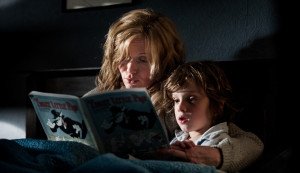
Courtesy of Bold Films Productions.
In the days of yore, the movie theater was a destination, a splendid exhibition hall adorned with velvet and bustling with well-dressed ushers. Nowadays, it’s a commercial monstrosity. To see the latest theatrical release is to cough up an absurd sum of money for a ticket and refreshments, merely to find that the few remaining seats belong to the first row. Simply put, visiting a modern movie theater is a taxing experience, both physically and mentally.
Fortunately for today’s consumer, there is an oasis in this desert of extortionate popcorn prices: Video on Demand (VOD for short). Thanks to the wonders of the Internet, you can now watch a handful of new releases — often available on the same day as, or within a week of, a given film’s theatrical debut — from the comfort of your living room, bed or bathtub. The theater may offer more exclusive mainstream content à la “Batman vs. Superman,” but the inherent flexibility of the VOD model easily eclipses the rigidity of the modern theatrical system. These days, a single remote rental charge can provide you with an evening’s entertainment, without the hassle of crowds or overt commercialism.

Courtesy of Kino Lorber Inc.
In the emerging VOD marketplace, viewers far removed from the urban hubs where lower-profile films thrive (think New York and LA), or those who simply can’t find the time to to get out of the house, can view an extensive melange of genres, films and ideas, previously unavailable. A number of historically troubled genres — from indie hits (including Leslye Headland’s raucous “Bachelorette”) to niche flicks (like Ryan Gosling’s psychedelic directorial debut “Lost River”) — have managed to find comfortable refuge in the tolerance of robust on-demand platforms. iTunes, for instance, boasts a multitude of unreleased indie titles. Its streaming competitor Fandor provides access to an array of films, including Australia’s “52 Tuesdays” and the other films of international distributor Kino Lorber, in conjunction with the arrival of these films in select cinemas.
Unfortunately, the digital viewing experience can never compare to the impact of seeing a film in the theater as intended. Unless you have a full-fledged IMAX screen stashed away in your basement, the image is going to be smaller. Unless you have state-of-the-art surround-sound speakers on your laptop, the audio is going to be tinnier. Unless you have a billion friends to watch every single movie with you, your experience of the film is going to be isolated, private, buttoned-up and repressed. Emotions are infectious: Watching “21 Jump Street” alone is bound to be less funny than seeing the film in a raucous auditorium chock-full of people who laugh until they cry.
Due to the absence of movie theater etiquette, watching a film at home, on a television or on your computer, doesn’t demand your attention as it should. There’s no social pressure encouraging you to remain in your seat throughout the duration of the film or to pay attention even when you might feel less than entertained, nor is there a sense of cinematic immersion. With a smaller screen and more distractions, the VOD experience pales in comparison to the intended sensation of theatrical viewing.
Despite the omnipresence of on-demand films, VOD gets a bit of a bad reputation in the entertainment world: After all, if “Maps to the Stars” were any good, how come it couldn’t secure a theatrical release? Last month, The Weinstein Company quickly pulled the plug on the planned VOD release of David Robert Mitchell’s “It Follows” as soon as it became clear that the film could hold its own in theaters. The logic is shaky at best, yet VOD is still often understood as a veritable dumping ground for lower-quality product and a lesser alternative to the standard theatrical release. As long as this remains the case, VOD is inevitably bound to attract some films of a lower caliber, allowing many of the platform’s finest to become lost beneath a pile of mediocrity. It’s a vicious cycle.

Photo by Matt Nettheim, Courtesy of IFC.
The few films that do emerge from VOD unscathed are instantly deemed inferior and are swiftly marginalized. Jennifer Kent’s “The Babadook” was a smash-hit with both critics and audiences; however, due to its simultaneous VOD release, the film and its leading lady (Essie Davis) were ineligible for Oscar glory.
But then again, would critics even be talking about “The Babadook” if the film had not been released in theaters and VOD simultaneously? Without VOD, perhaps “The Babadook” would have languished in relative obscurity, known only to the quality-conscious filmgoer in select urban arenas.
Contact Will Ferrer wferrer ‘at’ stanford.edu.
